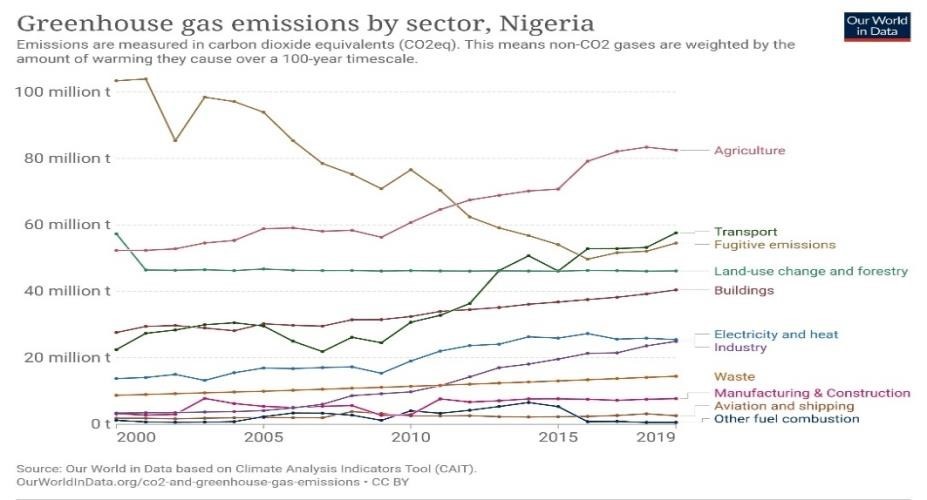Contributing Author: Josephine Awhobiwom Adah
Affiliation: Student Energy Career Training, Cohort 4.
Introduction
Green building is the practice of creating structures and using processes that are environmentally responsible and resource-efficient throughout a building’s life cycle. These practices extend beyond planting trees and vegetation beyond the surrounding of a building. The practice aims to efficiently utilize energy, water, and materials consumption; and increase environmentally friendly building practices throughout the entire lifecycle design, construction, operations and maintenance. Cities are primarily made of infrastructures that consist of buildings whether for industrial or residential purposes. Buildings and construction are responsible for 30% of energy-related CO2 globally. How can Lagos, Nigeria achieve the green building standards for energy-efficient buildings and in the long run lead to net-zero carbon buildings?
Lagos, Nigeria.

Lagos is a state in the country of Nigeria. It is said to be the economic hub of a nation whose population is the largest in Africa. Lagos has a growing population of 15 million individuals as of 2023 with projections from the United Nations (UN) world urbanization prospects. Lagos’ feature as the commercial hub makes the city heavily congested with emissions, from various sources like transportation, industrial wastes, fossil fuels, manufacturing and construction, and buildings. With the annual growth increase of 3.63%, provisions of buildings to cater for the growing influx of individuals are inevitable. Hence, the a need to plan for a sustainable, energy-efficient and climate-resilient infrastructure to aid net zero carbon emissions from buildings.
Figure 1.1 shows a steady and rising increase in the emission of CO2 from cement, a core material used in the construction and building industry.

Figure 1.2 further reveals the Buildings sector as the 5th largest contributor to greenhouse gas emissions as of 2019 with a consecutive increase since the year 2000. The Electricity and heat sector also following the pace.
Recommendations of Buildings to Reduce Carbon Emissions Through Green Building Requirements, Standards and Certifications.
Different green building requirements, standards and certification exists globally to regulate the emissions from buildings, however, the standards are developed to suit the goals and needs of the country. The Leadership in Energy and Environmental Design, (LEED) standards are used in the United States, for the United Kingdom, the BRE Environmental Assessment Method (BREAM), Although, Nigeria has no green building law, the EDGE (“Excellence in Design for Greater Efficiencies”) standard by the World Bank is recommended for low-cost building and is suitable for developing countries. The slow adaption to green building standards is mainly due to a lack of orientation and sensitization to professionals and clients to adopt green design for use. Few buildings in Lagos state, such as the Nest oil towers, the Heritage building, and Wings and Alliance buildings are green compliant. The following action points could be adopted to reduce CO2 emissions and green building standards:
- Upskilling of professionals to adopt green design practices;
- Sensitization of clients to be climate-conscious and advocates for a net zero goal; – Adoption of policies that enforce the use green building standards.
- Incentives should be made available for clients adopting green standards.
References
https://archive.epa.gov/greenbuilding/web/html/about.html
https://www.usgbc.org/articles/how-do-we-get-zero-carbon-buildings
https://ourworldindata.org/co2/country/nigeria
https://guardian.ng/property/experts-list-hinderances-to-green-building-developments-innigeria/


1 Comment
I love how this blog gives a voice to important social and political issues It’s important to use your platform for good, and you do that flawlessly